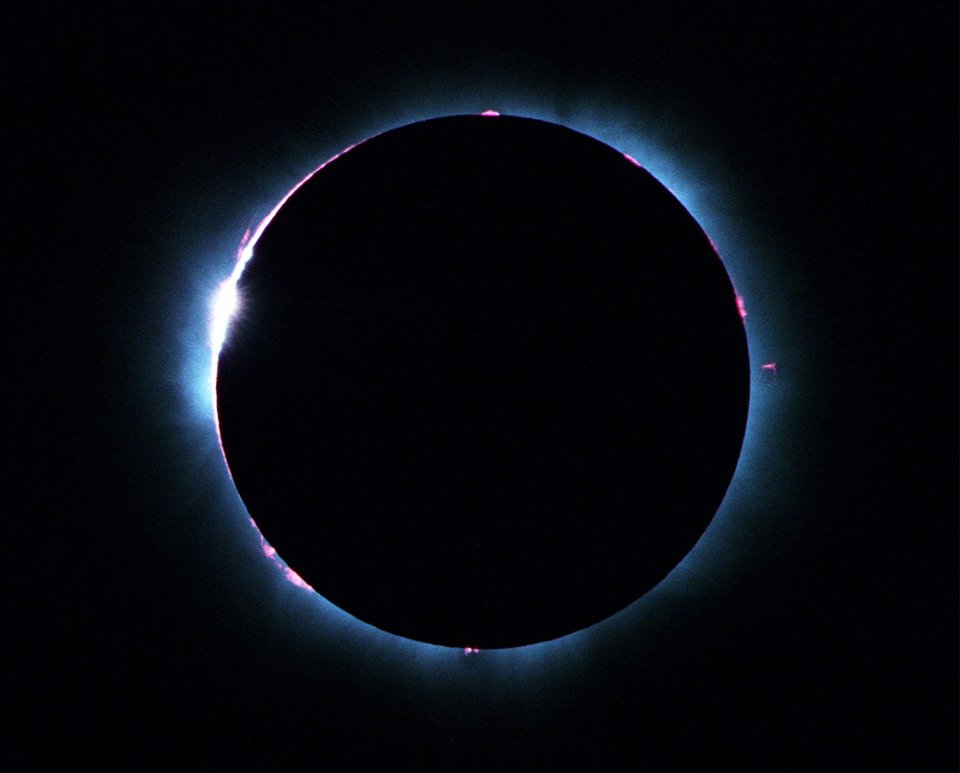As the Aug. 21 solar eclipse approaches, science fans and space enthusiasts across North America are preparing for the event. Even though the eclipse’s path won’t cross McGill campus, students shouldn’t miss this once-in-a-lifetime event. Here is everything you need to know:
What is an eclipse?
A solar eclipse occurs when the Moon passes directly between the Sun and the Earth. This means that the Moon prevents the Sun’s light from reaching our planet and casts us into its shadow for a limited amount of time. A lunar eclipse, by contrast, occurs when the Earth moves between the Sun and the Moon. A total solar eclipse happens when the Moon blocks out the Sun’s rays entirely and forms a halo of light around the Moon, called a corona. During this brief time, those in the right place on Earth are submerged in darkness and the temperature can even drop by around five degrees.
Surprisingly, total solar eclipses are not rare phenomena, occurring approximately once every 18 months on average. However, the area in which these events are visible usually spans about 100 km in width, covering less than half a percent of Earth’s surface. Most of the time, this tiny sliver of shadow is cast over the ocean and never seen.
Monday’s eclipse, in particular, will be the first total solar eclipse visible from North America since 1979, and the first one to travel from coast to coast since 1918. Anyone within its path of totality, the 70-mile-wide band in which a full total eclipse will occur, will be able to experience a spell-binding two minutes and forty seconds of darkness.
Wow, that sounds great! Where and when can I see this “Great American Eclipse?”
The total solar eclipse will take place this Monday, Aug. 21. Beginning in Oregon, it will travel across the United States to South Carolina, crossing parts of Idaho, Wyoming, Nebraska, Kansas, Missouri, Illinois, Kentucky, Tennessee, Georgia, and North Carolina along the way. If you happen to live in any one of those states or feel like a road trip from Canada, you are in luck. Odds are, you are a short car ride away from the path of totality.
Despite the picturesque qualities of the eclipse, remember that looking directly at the Sun can cause damage to eyes. Never look directly at the Sun–even if it is partially covered. Viewers should consider purchasing a pair of eclipse glasses, also known as solar-viewing glasses, with specially-made solar filters that provide much more protection than regular sunglasses. If not, another safe method to view the eclipse would involve making a pinhole camera, using only a shoebox and some aluminum foil. The only time it is safe to look directly at the Sun is when the Moon has covered it completely.
Those residing in Montreal will unfortunately not be able to see the total eclipse (only about 60 per cent of the Sun will be covered), but partial eclipsing will begin at 1:21 p.m. and reach its maximum at 2:38 pm. AstroMcGill will be holding an eclipse-watching event on the Lower Field, starting at 1 p.m..
Oh no! I won’t be in North America on that day. Can I still see the eclipse?
Sadly, people on other continents will not be able to see the glory of the total eclipse, but might be able to view a partial one depending on their location. For most countries in Northwestern Europe, including the UK, France, Germany, Belgium, Spain, and Portugal, the Sun will set before the eclipse has had time to finish.
Luckily, NASA will be offering a live stream of the eclipse from beginning to end, which will include footage of the eclipse itself as well as question and answer sessions with scientists.
As for the next eclipse to travel over North America, we will have to wait until 2024!









